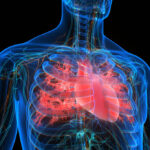- Home
- Who We Are
- Shop
- Products
- GlycoCheck
- The Science
- Study: Improving Aortic Aging with Endocalyx Pro
- Improve Vascular Health with This Supplement
- Promising Supplement for Kidney Health
- Inositol & Insulin Resistance
- PEMF Therapy Benefits
- Maximizing Mediterranean Diet Benefits
- Glycocalyx (eGC): What is Endothelial Glycocalyx?
- 9 Tips for a Healthy Aging Lifestyle
- More Science….
- News & Events
- Join
- Login

Microvascular differences in individuals with obesity at risk of developing cardiovascular disease
Abstract
Objective
This study aimed to investigate microvascular differences in individuals with obesity at risk for developing cardiovascular disease.
Methods
In this cross-sectional Netherlands Epidemiology of Obesity study, participant sublingual microcirculation was assessed with a newly developed GlycoCheck software (Microvascular Health Solutions Inc., Salt Lake City, Utah), which integrates red blood cell velocity within the smallest capillaries (4-7 µm) and feed vessels (>10 µm). Framingham Risk Score was used to calculate 10-year cardiovascular risk, divided into low-, intermediate-, and high-risk groups. ANOVA was used to evaluate microvascular differences among the groups.
Results
A total of 813 participants were included. The high-risk group (n = 168) was characterized by differences in the microvasculature compared with the low-risk group (n = 392): the high-risk group had a 49% reduction in the number of smallest capillaries and a 9.1-µm/s (95% CI: 5.2-12.9) higher red blood cell velocity in the feed vessels. No differences in velocity-corrected perfused boundary regions were found.
Conclusions
It was observed that, with adding red blood cell velocity to the software, sidestream dark field imaging is able to detect microcirculatory differences in a cohort of individuals with obesity at risk for developing cardiovascular disease.
Science Articles
Quick Navigation
Contact Info
NuLife Sciences, Inc.
7407 Ziegler Rd
Chattanooga, TN 37421
(800) 398-9842




